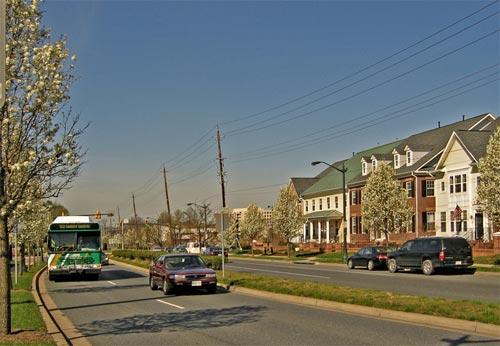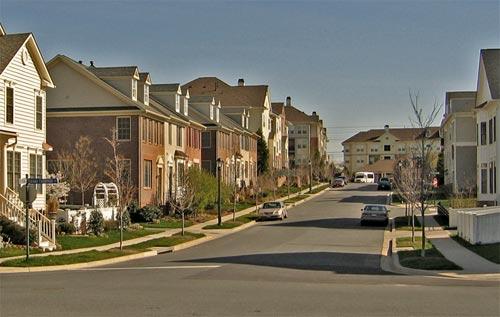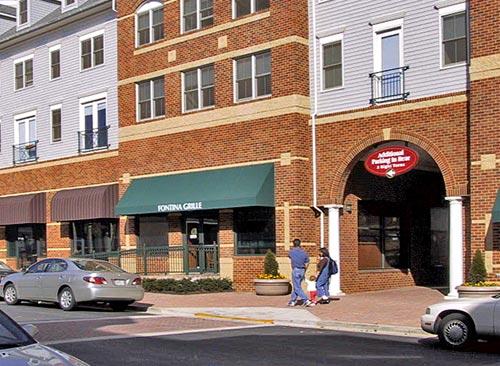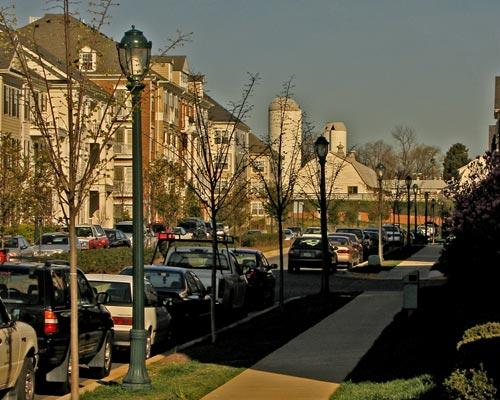Provide Transportation Choices: King Farm, Rockville, Maryland
King Farm is a compact, walkable, mixed-use community in Rockville, Maryland, that takes advantage of the wide variety of nearby transportation choices. Across the road, the Shady Grove Metro station provides rail access to Rockville, Bethesda, and much of the Washington, D.C., metropolitan area. King Farm operates private shuttle buses to the station on a continuous weekday loop for residents, employees, and visitors.
Buses running along Frederick Road and converging at the Metro station provide access to much of northern Montgomery County. The proposed Corridor Cities Transitway would provide light rail or bus rapid transit to Gaithersburg, Clarksburg, and possibly Frederick, Maryland. The state’s Technology Corridor, Interstate 270, is a short drive from King Farm. Bike paths link parks, schools, and the Metro station to King Farm’s neighborhoods and surrounding communities.
The Montgomery County Parks and Planning Commission understood the benefits of transit-oriented development when it allowed King Farm Associates to build 3,200 homes on the 430-acre site. As a result, King Farm has a gross residential density more than three times greater than that of Rockville.
Apartment and condominium housing, along with more than 2 million square feet of commercial space, is laid out in a "T" near the Metro station and along the proposed Transitway. Farther from the transit area, housing shifts to town homes and single-family, detached homes. The Village Center combines 120,000 square feet of neighborhood retail with 49 apartments.
A connected grid of narrow streets with wide sidewalks makes walking pleasant and convenient within King Farm. Parking is mainly on the street, behind buildings, or in parking structures to make the streets more pleasant for walking. The King Farm gas station puts the gas pumps in the rear and the convenience store on the corner to make it easier for pedestrians to access.
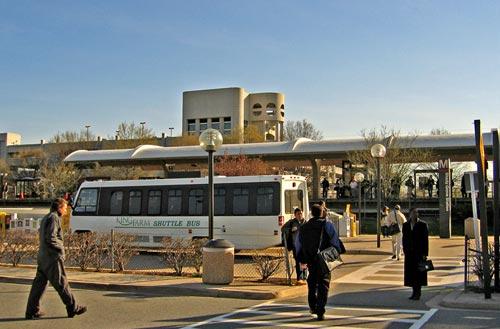
More than one-quarter of King Farm’s land is reserved for parks and open space. Buffered corridors protect streams and stormwater ponds. Two city parks of 12 and 28 acres have recreation facilities, while a 5-acre heritage park preserves most of the original dairy farm buildings for arts and education. Numerous pocket parks, squares, and commons put community meeting spaces and green space within a short walking distance of every resident.
In 2001, King Farm won a Charter Award from the Congress for the New Urbanism.
This case study was first published in 2006 and updated in March 2012.
Find other case studies in Smart Growth Illustrated that discuss the 10 smart growth principles.

